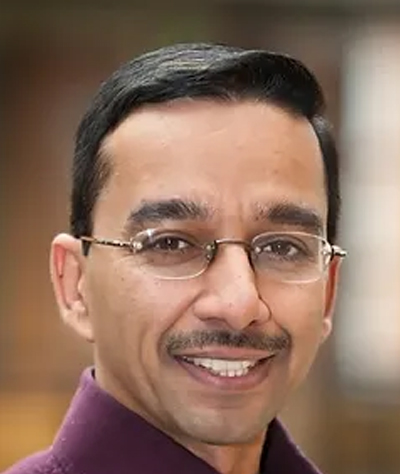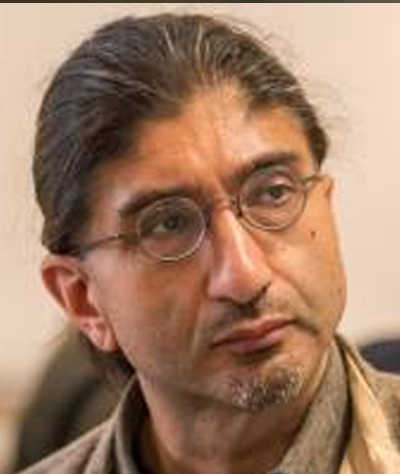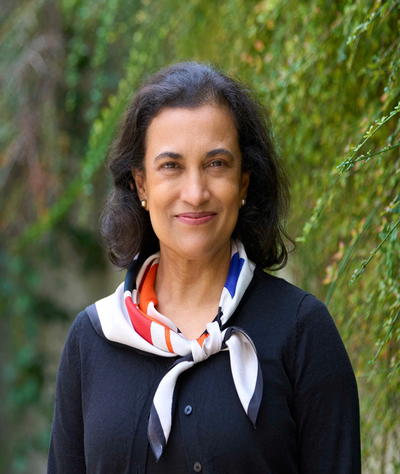Keynotes

Rajesh P. N. Rao
Title : ACTIVE PREDICTIVE CODING AND THE PRIMACY OF ACTIONS IN PERCEPTION AND COGNITION
Abstract : Recent neurobiological experiments indicate that almost all cortical areas, even those traditionally labelled as sensory, are modulated by upcoming actions. Parallel evidence from neuroanatomical studies points to major outputs from neurons across cortical areas to subcortical motor centres. To account for these findings, we propose that the neocortex implements active predictive coding (APC), a form of predictive coding that combines actions and hierarchical sensory-motor dynamics. We provide examples from simulations illustrating how the same APC architecture can solve problems that seem very different from each other: (1) how do we recognize an object and its parts using eye movements? (2) why does perception seem stable despite eye movements? (3) how do we learn compositional representations, e.g., part-whole hierarchies, and nested reference frames? (4) how do we plan actions in a complex domain by composing sequences of sub-goals and simpler actions, and (5) how do we form episodic memories of our sensory-motor experiences and learn abstract concepts such as a family tree? Our results from the APC model illustrate the critical role played by actions, both external and internal to the brain, in mediating perception and cognition.
Maneesh Sahani
Title : Noise, uncertainty, priors and bias in perception
Abstract : A physically identical stimulus presented over and over may evoke a somewhat different percept on each occasion. Psychophysical models describe this variability as coming from internal processing noise, the scale and influence of which is robustly measurable, but the origin of which is at best incompletely understood. However, although the noise itself appears inescapable, two decades of research has shown that the way noisy sensory signals are processed is often close to optimal. I will review some of these results, highlighting the ways that noise-induced uncertainty shapes perceptual decisions and report. I will end with two recent experiments that probe the treatment of uncertainty about remembered stimuli. These experiments have allowed us to characterise precisely the decision process underlying stimulus reconstruction; and to reveal the way observers rely on "prior" knowledge from recent experience to shape current percepts. WORKSHOP


Suparna Rajaram
Title : SOCIAL REMEMBERING - A COGNITIVE PERSPECTIVE
Abstract : Shared stories are the glue of our social lives. As social animals, families, partners, friends, study groups, work teams, and more broadly, communities and societies develop shared representations of their past. These collective memories fulfil a variety of personal, cultural, educational, and political goals, and have long been topics of interest in history, anthropology, sociology, and social psychology. By contrast, cognitive psychological investigation has lagged despite early interests in the social transmission of memory in Bartlett's seminal 1932 treatise. Over a century of scientific experimental research on memory has instead almost exclusively focused on the individual. Leveraging the principles developed in this foundation of experimental research on individual memory ability, my research group investigates social influences on memory. This paradigm shift opens the opportunity to examine how individual memory constraints shape the performance of the group, and in turn, how collaborative remembering by a group reshapes the memory of each member. Our key questions include how memory contagion spreads in groups for both true and false information, how contagion patterns shift in larger groups containing both direct and indirect social connections, and how social transmission of information synchronizes memory across people. I will discuss data and theory from my lab on the cognitive mechanisms that shape how people remember, misremember, forget, and synchronize information by working in groups. This experimental approach has the potential to offer insights into how social transmission of memory influences human thinking, decision-making, behaviour, and a range of socially relevant endeavours.
Chantal Martin Soelch
Title : THE REWARD SYSTEM AS AN INTERFACE BETWEEN MOTIVATION, PLEASURE AND COGNITION
Abstract : The cerebral reward system groups together a set of brain regions specifically involved in the processing reward information. First identified as the brain's pleasure center, it is now considered a neural correlate of motivation. It involves subcortical regions, such as the striatum and prefrontal cortex, and can be studied in a translational manner. At both cortical and behavioral levels, it can be seen as an interface between motivation, cognitive performance and pleasure. During this conference, behavioral and neuroimaging results from our group will be presented, illustrating this interface role and integrating research on the link between dopamine, pleasure and reward.


Kranti Saran
Title : ATTENTION WITHOUT THE WILL - RETHINKING THE DISTINCTION BETWEEN TOP-DOWN AND BOTTOM-UP ATTENTION
Abstract : It is no accident that St Augustine is credited with two connected ideas of great importance to the history of the top-down/bottom-up distinction. The first is his doctrine of the will, modeled on the divine will, that is constitutively tied to agency, freedom, responsibility, willpower, and is implicated in all action (Dihele 1982). The second is his distinction between voluntary (i.e. willed) and involuntary (i.e. not willed) shifts of attention (Hatfield 1998). Both profoundly shaped what emerged as the top-down/bottom-up distinction. Yet Augustine’s ideas are philosophically loaded and far from compulsory. We can do better. Drawing on recent work in philosophy by Ganeri (2018) and in psychology by Benoni (2020, 2018), I critically assess the prospects of four models of the top-down/bottom-up distinction in psychology: the traditional dichotomy (e.g. Baluch & Itti 2011), a trichotomy (Awh et. al. 2012), a revised dichotomy (Egeth 2018), and the relevance spectrum proposal (Benoni 2018). Inspired by early Buddhist thinking on the nature of attention, I propose a reconfiguration of the top-down/bottom-up distinction that dispenses with Augustine’s ideas and better fits the empirical data.